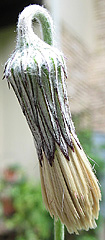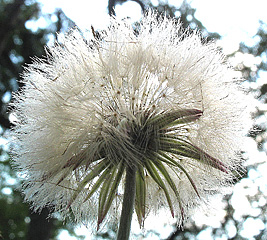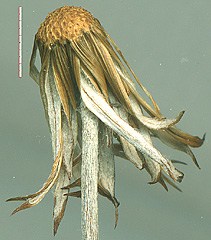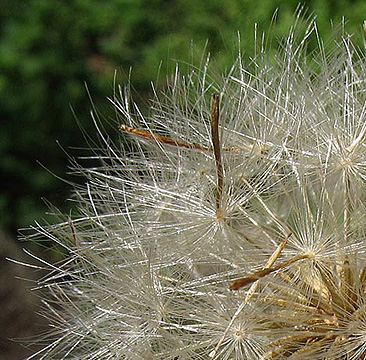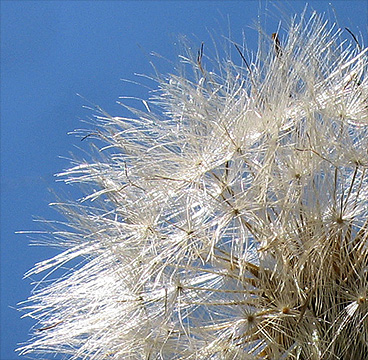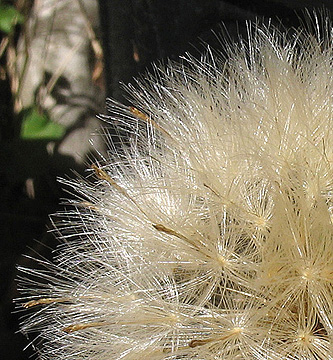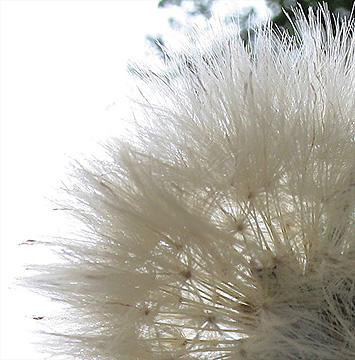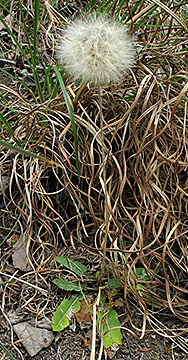
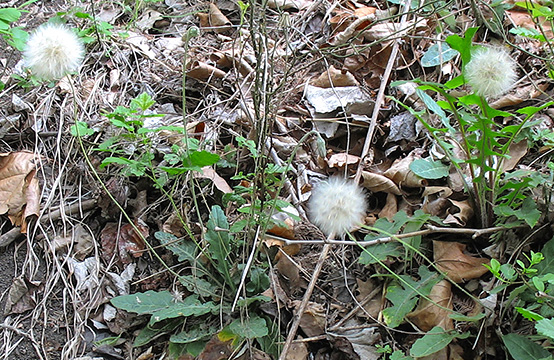
C. carduacea dispersal heads
Fruit Maturity — Dispersal — Silverpuffs
by Bob Harms

Chaptalia texana and C. carduacea are commonly known as ‘silverpuff,’ for the puff ball that forms at fruit maturity and which is the stage of these species most likely to be noticed.
The head and fruit undergo several changes prior to or at dispersal.
- Starting already late in anthesis, the achene ‘beak’, a narrow extension between the achene body proper and the base of the pappus elongates, generally ca. 1¼ to 1½ or more times the length of the achene body.

|
⇒ ⇒
|

|
- The pappus bristles which had tightly surrounded the florets spread apart (as above).
- The phyllaries spread downward, the involucre no longer holding the achenes together.
- At the same time the receptacle abruptly changes its flat–to–concave platform to which the achene bases are attached, becomes convex, now spreading the achenes apart, some even downward, to complete the sphere.
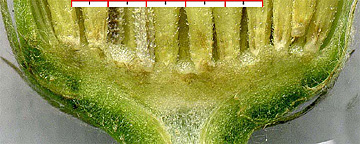
|
⇒ ⇒
|
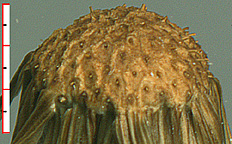
|
Although puff balls for both species develop in the same manner, as outlined above, the pappus differs in ways that produce less dense spheres for C. texana; i.e., it has fewer bristles per achene and these are shorter and not as straight as with C. carduacea. In the pictures below one can see through the bristle mass of C. texana (top row) more easily than with C. carduacea.
Plant Resources Center Home Page — Flora of Texas
— Chaptalia







